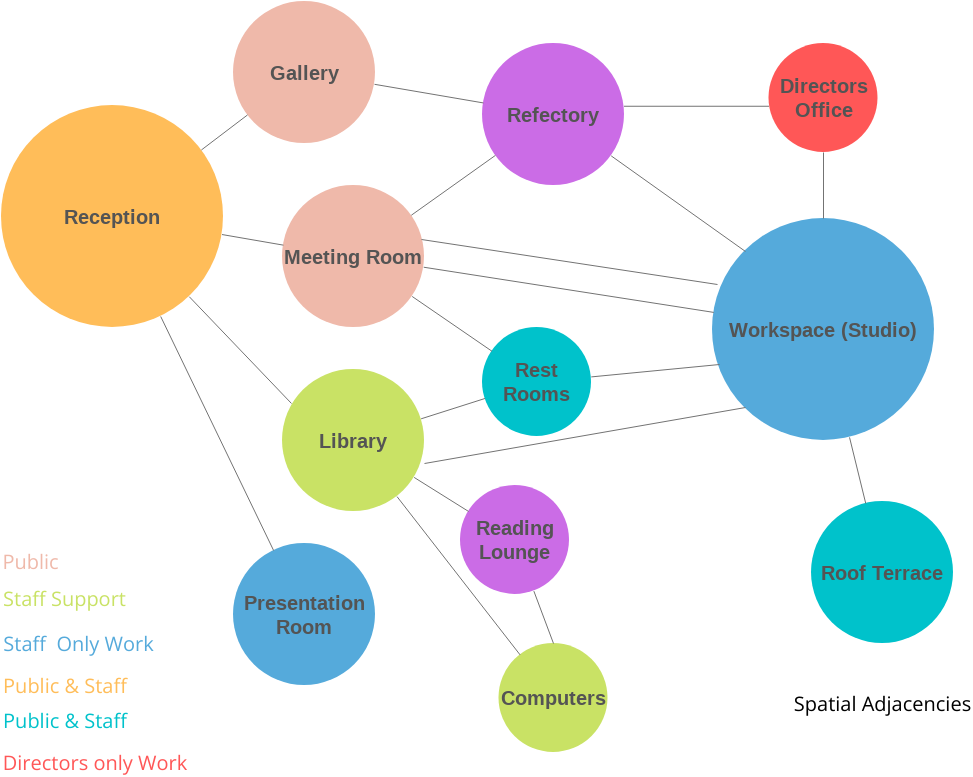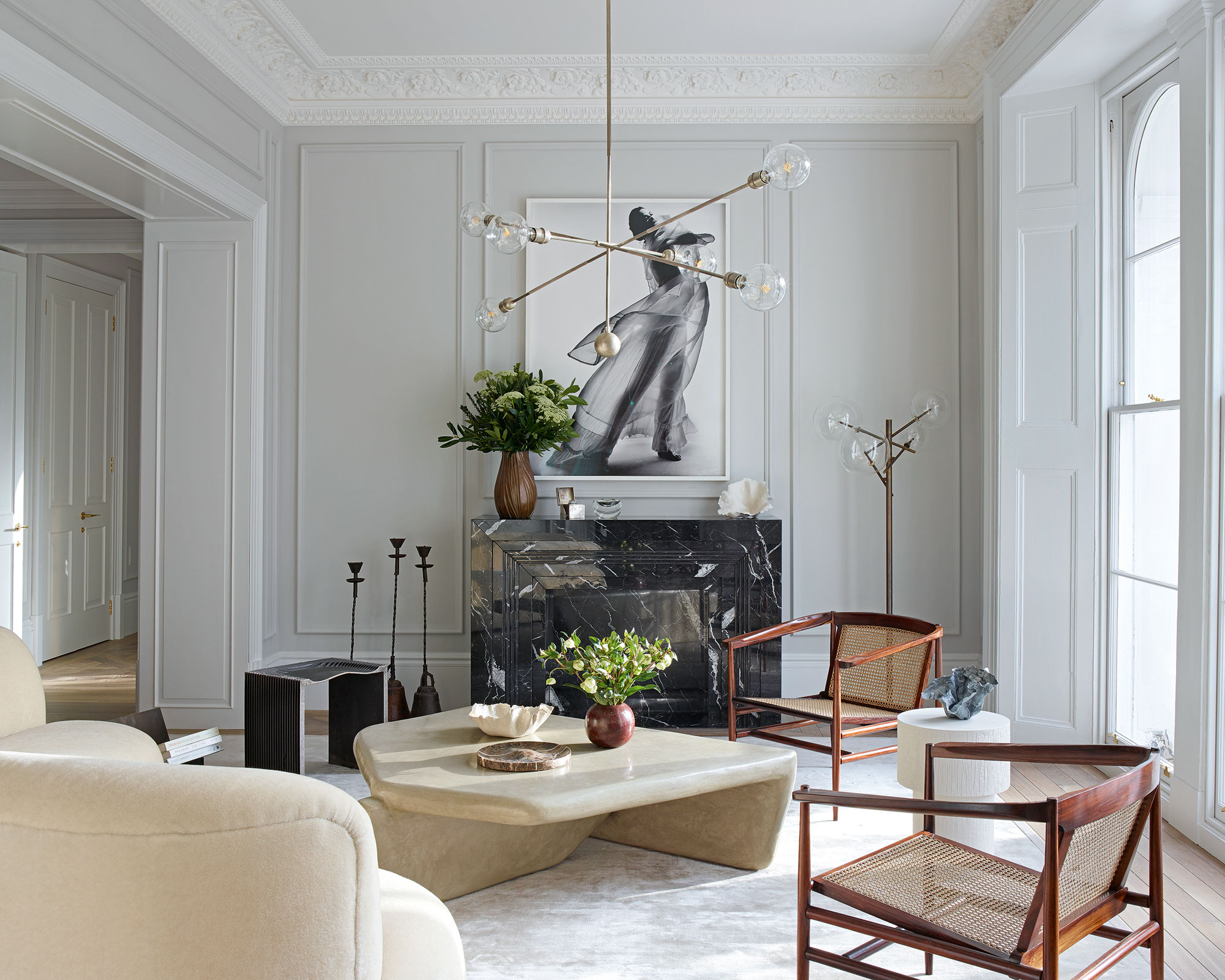Table Of Content

It comes with a Bubble Diagram editor that is concise and intuitive, designers will not be disturbed by the cumbersome popups and messages. Designers often draw their bubble diagrams on paper with just one pencil or pen. As you can see, it’s a simplistic representation of a building floor plan, identifying the rooms and spaces the building will have along with how these rooms will be connected to one another.
Best Instagram Accounts to Follow for Architectural Sketching
Architecture bubble diagrams are a crucial part of the design process because they provide a visual representation of the relationships between different spaces within a building. By creating a bubble diagram, architects and designers can quickly and easily see how different areas relate to each other and identify any potential issues or challenges. This can help to inform decisions about the layout and design of the building and ensure that it meets the needs of the people who will be using it. The best design software can offer several benefits to interior designers and home stagers in creating visual representations of floor plans and designs.
The Best Interior Design Apps, Tools, and Software
However, when used in the wrong context or without taking into consideration practical considerations, bubble diagrams may result in inefficient designs or clutter. For those who are unfamiliar with bubble diagrams, these tips and tricks can help maximize the potential of this powerful diagramming method in interior design projects. It’s important to note that bubble diagrams are not typically used as architectural diagrams in the same way as other types of diagrams, such as floor plans or elevations. Rather, they are a tool for exploring and organizing spatial relationships in the early stages of design. When creating an impactful bubble diagram for interior design projects; it is essential to consider key elements such as defining functional zones and circulation paths, incorporating client requirements and preferences, and accounting for space constraints and proportions.

Unistrut DIY Projects: Building with Versatility and Creativity
HomeByMe is one of the best interior design apps for when the ideas are racing. It’s browser-based - even mobile browsers are supported - and has Android and iOS apps, so you can map out thoughts for your home whenever and wherever inspiration strikes. Generally, the definition of an Architectural Bubble Diagram starts from a spatial planning phase, which relies mainly on gathering customer feedback in order to outline the building’s requirements.
Bubble diagrams are often used in the early stages of the design process, before more detailed plans are developed. Once the general layout and organization of spaces are determined, the diagram can be refined and developed into more detailed floor plans and elevations. This is a planning tool that allows groups or particularly important items to be represented simply and quickly when starting basic space planning.It allows the relationships required between working groups or individuals to be depicted graphically. This in turn places them geographically in the alloted space.Essentially each item or group is a named bubble and that bubble is usually an approximation of the size of the item or group in relation to the others. It doesn’t have to be initially, as the bubble diagram is really there to place the items or groups in relationship to their environment or constraints and each other. It may just be a note but the point is that the item is listed and in spacial relationship to the other items.
Rethinking Building Materials
This lets you scan and measure the room you’re in - although we suspect this augmented reality feature would function a lot better in an unfurnished space. Now, whether you are a design student, a starting out professional in one of the design-related fields, or just somebody looking for a way to reimagine their own space, you have come to the right place. In this article, we will tell you all you need to know about what bubble diagrams in architecture is and how you can make impressive bubble diagrams using Boardmix, a great new online diagram maker. Bubble diagrams are most commonly used by designers at the beginning of a project when they first visualise what the layout of the room should look like and assess how different furniture and features can fit into it.
ID Synthesis I Project 3: 8040 Gallery - School of Planning, Design and Construction - Michigan State University
ID Synthesis I Project 3: 8040 Gallery - School of Planning, Design and Construction.
Posted: Wed, 20 Jul 2016 07:00:00 GMT [source]
An architectural diagram is a visual representation that illustrates the structure, components, relationships, and behaviors of a system or application architecture. It typically consists of various elements, such as boxes, lines, arrows, and text, that depict the various components of a system, their interactions, and their relationships with each other. One of the primary benefits of using bubble diagrams lies in their ability to streamline communication and collaboration between designers, clients, and contractors. Integrating client requirements and preferences is a crucial step in the development of a successful bubble diagram; as it allows designers to align the spatial layout with the client’s lifestyle, priorities, and design aspirations. A Bubble Diagram is a very simple (hand) drawing that consists of roughly drawn bubbles (representing spaces) connected by solid lines, broken lines or wavy lines etc. to specify the type of relationship between the spaces. The program is a listing that itemizes the areas that should happen within the building.
Q. What types of software do interior designers use?

A bubble diagram is essentially a two-dimensional sketch of space divided into various parts based on their function and usage. These sections are “bubbles,” which offer information about how many areas need to be considered for the design project, as well as what functions should occur in each space. For instance, a bedroom may have several bubbles – each representing a sleeping area, dressing area, laundry area etc., with arrows pointing inward from each one-indicating that all these sections need to be considered when planning out an interior design project. 3) Analyze The Available Space & Program Elements – Evaluate how much space is available to work with and based off of that figure out which program elements (storage space, seating area etc.)are necessary depending on the brief requirements clients outlines earlier. Creating bubble diagrams for architecture projects can be done using various software tools, ranging from basic drawing applications to more specialized design software.
Bubble Diagrams for Design
For us, great interior design software makes it really easy to fully express a creative vision in a digital space. Similar to the best architecture software or the best 3D modeling software we reviewed, interior design software boast tools capable of mocking-up rooms, houses, and buildings in 2D and 3D, often with photorealistic assets and textures. Interior design software can be indispensable to designers as they plan, organize, and decorate spaces. The software can be used to collaborate with clients in determining the right design before committing to pricey projects.
It also allows you to invite others to collaborate on the bubble diagram and build it with you or give you real-time input while you are creating your design. If you are an architecture student, you are probably already familiar with the concept of the architectural bubble diagram. If you aren’t – and this is the first time you have been assigned the task to study these diagrams, have a look at the image at the top of this page. 4) Accurately Measure The Space – Using accurate measurements when constructing even basic bubble diagrams are important! In essence, bubble diagrams are about exploring and defining the “what” and “why” of space relationships, while schematic design begins to address the “how” in more detail, setting the stage for the detailed design work that follows.
Mastering the art of understanding and utilizing bubble diagrams is an important skill for interior designers, as these diagrams go beyond being mere circles and ovals on paper. They are powerful tools that help conceptualize and refine designs to create spaces that are both functional and visually appealing. Architecture bubble diagrams are a key tool used by architects and designers to help conceptualize and organize the layout of a building or space. These diagrams provide a simple, visual representation of the relationships between different areas and functions within a building. In this article, we will explore what architecture bubble diagrams are, how to create them, and why they are an essential part of the design process.
Just like the seating chart does with the marriage visitor checklist, a bubble diagram illustrates this system. These can be imported into the home design software and turned into a 3D model. It's all browser-based designing, however, so needs a constant inter connection. There is an Android app available, but this is designed for presenting designs created on the website. This roundup factors in costs, trial period offerings for testing out programs, system requirements, mobile app availability, and what kinds of learning resources to are offered to master their use. The bubble diagram allows you to quickly experiment with different spatial distributions, which can then be reviewed and refined, and analyze and verify each element of the project in a simple and immediate way, in order to find the optimal solution.

No comments:
Post a Comment